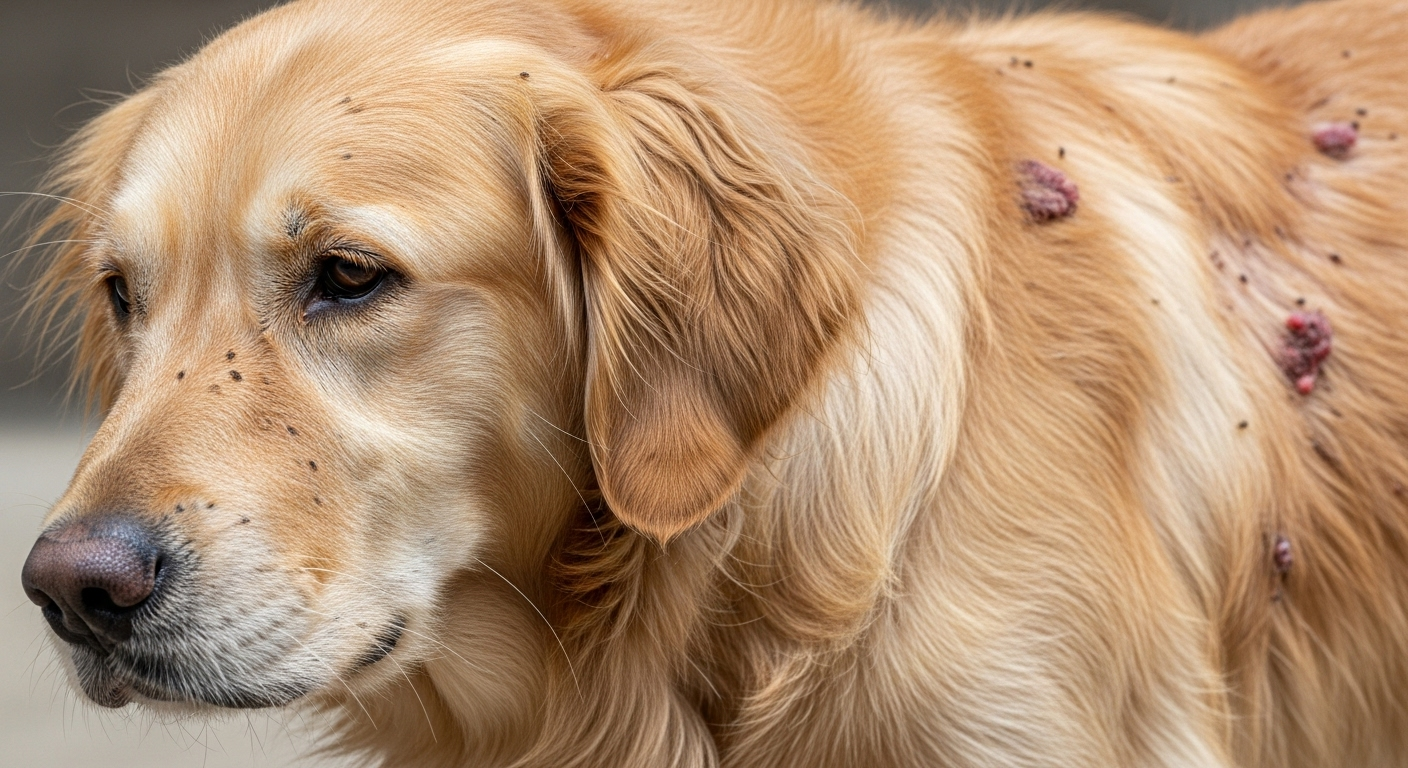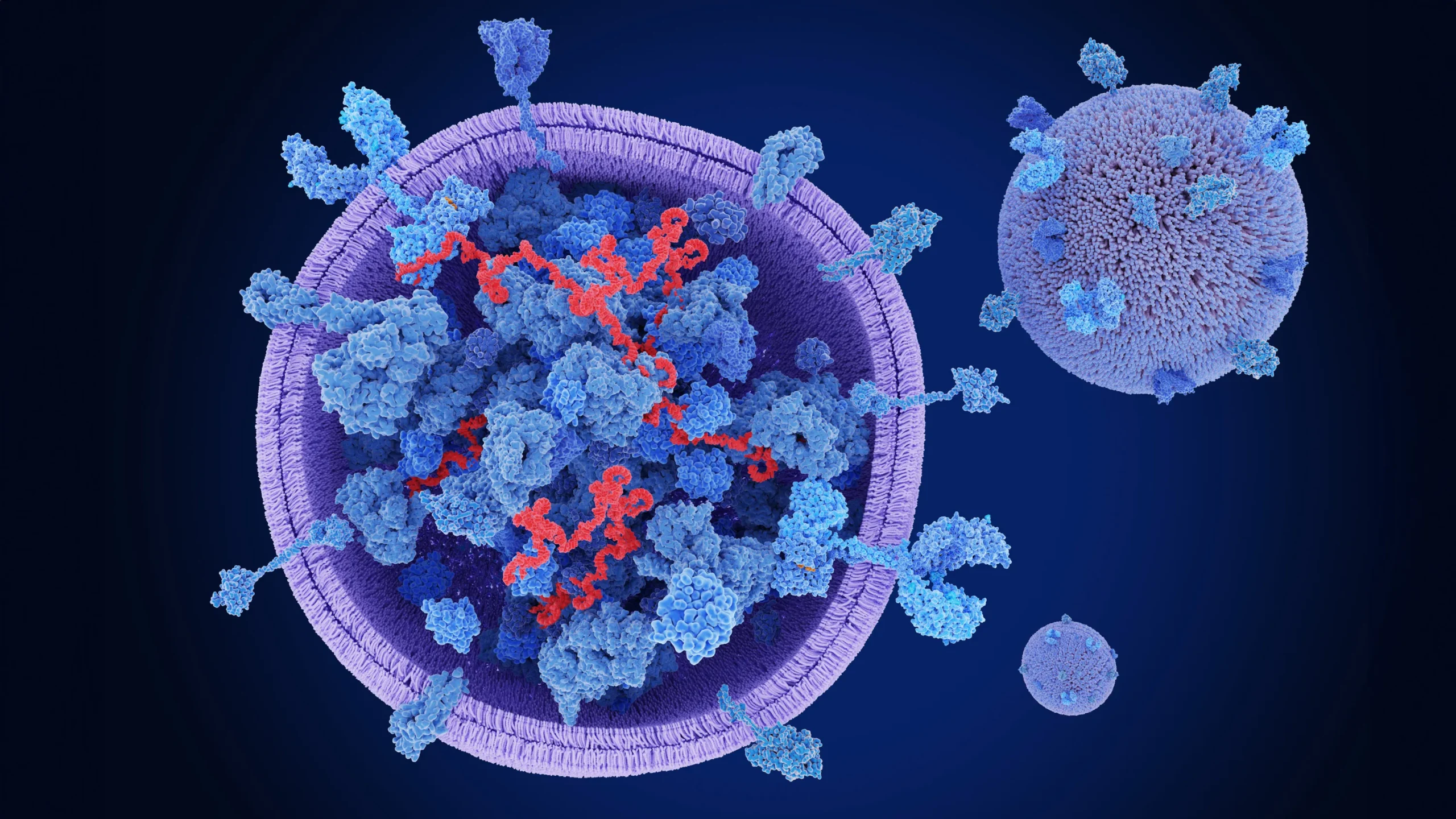Worried about mites, ringworm, dog hair loss, or mange causing distress to your pet? These skin conditions can lead to intense itching, hair loss, and even infections — impacting your dog’s health and your household. In this comprehensive guide, we break down the differences between these common issues, share expert treatment strategies, and offer prevention …
Worried about mites, ringworm, dog hair loss, or mange causing distress to your pet? These skin conditions can lead to intense itching, hair loss, and even infections — impacting your dog’s health and your household.
In this comprehensive guide, we break down the differences between these common issues, share expert treatment strategies, and offer prevention tips. Whether it’s mange or fungal infections, you’ll learn how to recognize early signs, treat them effectively, and restore your dog’s coat with confidence.
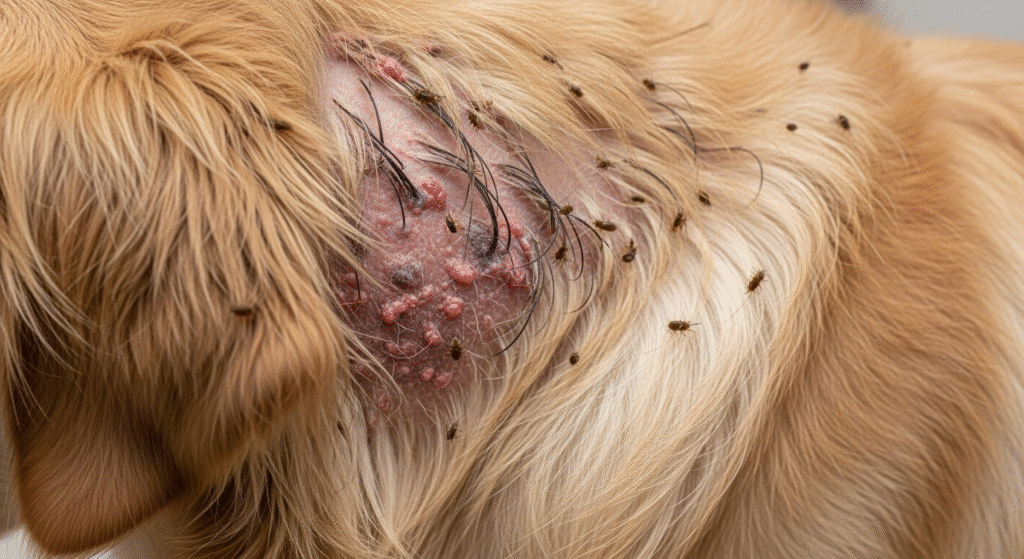
What Do Mites Ringworm Dog Hair Loss Mange Mean?
Mites vs. Mange
Mange is a skin condition caused by mites, which are microscopic parasites that burrow into or live on a dog’s skin. The two most common types of mange are:
- Sarcoptic Mange (Scabies): Highly contagious and causes intense itching.
- Demodectic Mange (Demodex): Usually seen in puppies or dogs with weak immune systems.
There are other mites like Cheyletiella (commonly known as walking dandruff) that also cause skin irritation but are less severe.
Ringworm Explained
Despite the name, ringworm is not a worm but a fungal infection. Also called dermatophytosis, it creates circular patches of hair loss, scaly skin, and redness. Ringworm is zoonotic, meaning it can spread to humans and other pets, so early treatment is essential.
How They Cause Hair Loss
Both mange-causing mites and ringworm fungi damage the hair follicles. Mites burrow and irritate the skin, triggering scratching and secondary infections. Fungal infections interrupt hair shaft growth and lead to patchy or circular hair loss, often accompanied by inflammation and crusts.
Top Culprits Behind Dog Hair Loss
Sarcoptic Mange (Scabies)
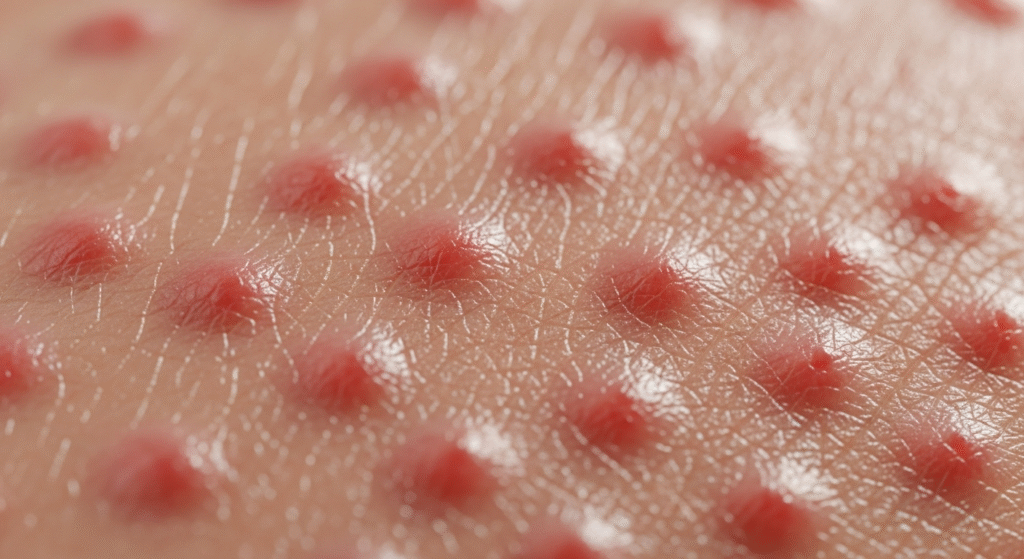
Caused by Sarcoptes scabiei mites, this form of mange is:
- Highly contagious (to humans too)
- Causes intense itching, red skin, scabs, and crusting
- Common around the ears, elbows, and belly
Demodectic Mange
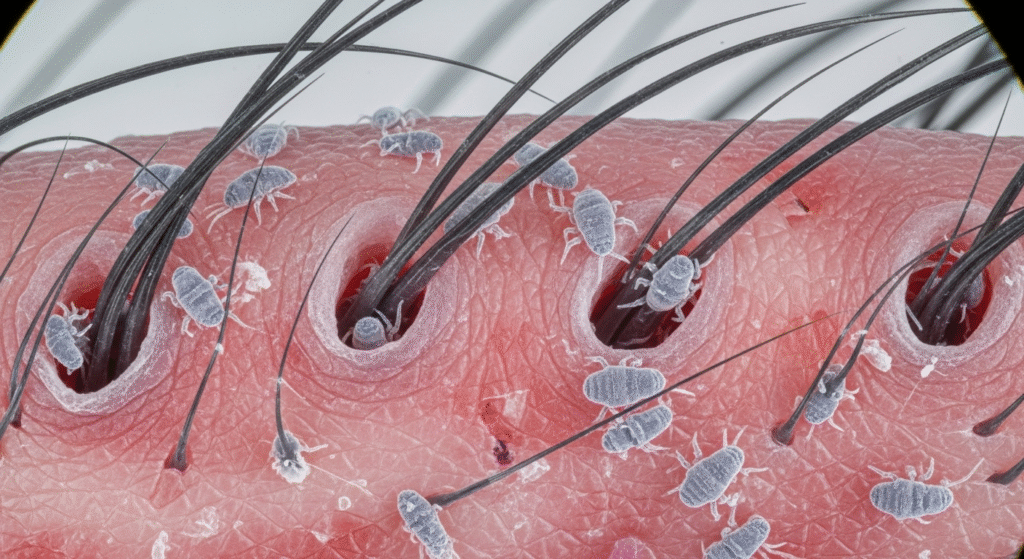
Caused by Demodex canis mites, it typically:
- Affects young dogs or those with weak immune systems
- Causes patchy, non-itchy hair loss
- May progress into secondary bacterial infections
Demodectic mange is not contagious but can become chronic if left untreated.
Cheyletiellosis (Walking Dandruff)
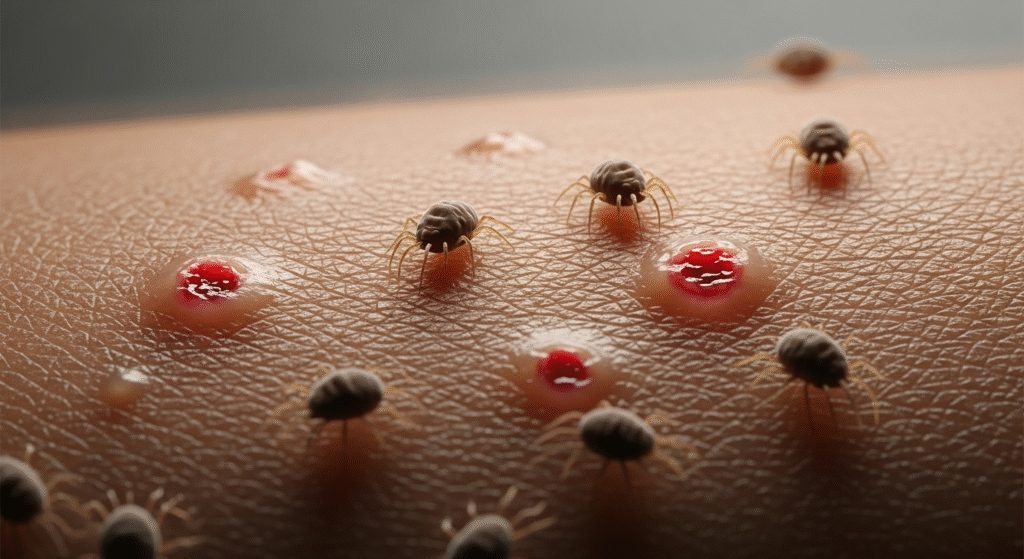
A less common condition caused by Cheyletiella mites:
- Causes scaly, flaky skin that looks like dandruff
- May lead to moderate itching and hair thinning
- Can transfer to humans temporarily
Ringworm (Dermatophytosis)
Commonly seen in shelters or multi-pet households:
- Causes circular bald spots with crusty edges
- Often appears on the face, paws, ears, and tail
- Can be spread via contaminated objects, bedding, or contact
Diagnosis for Mites Ringworm Dog Hair Loss Mange
To identify the cause of your dog’s hair loss, vets may perform:
- Skin scrapings to detect mites under a microscope
- Wood’s lamp test to spot ringworm (only some strains fluoresce)
- Fungal cultures or PCR tests to confirm dermatophytosis
- Cytology and skin biopsies in chronic or unclear cases
Veterinarians will also rule out non-parasitic causes, like:
- Food or environmental allergies
- Flea infestations
- Hypothyroidism or Cushing’s disease
Treatment & Management of Mites Ringworm Dog Hair Loss Mange
Mange Treatments
Sarcoptic Mange:
- Topical dips like lime sulfur or amitraz
- Oral medications such as ivermectin or isoxazolines (e.g., NexGard, Bravecto)
- Treat all in-contact pets and sanitize the environment
Demodectic Mange:
- Oral medications (e.g., fluralaner, milbemycin oxime)
- Medicated shampoos to relieve inflammation
- Nutritional support to boost immunity
Ringworm Approach
- Topical antifungals: miconazole, clotrimazole, or lime sulfur dips
- Oral antifungal drugs: griseofulvin or itraconazole for systemic infections
- Environmental decontamination:
- Wash bedding in hot water
- Disinfect surfaces regularly
- Avoid contact with infected animals
Supportive Care
- Medicated baths to soothe the skin
- Omega-3 supplements for skin health
- Antibiotics for any secondary bacterial infections
Recovery Timeline and EEAT Enhancements of Mites Ringworm Dog Hair Loss Mange
Expected Healing Times
| Condition | Healing Time |
|---|---|
| Sarcoptic Mange | 4–6 weeks |
| Demodectic Mange | 6–12 weeks |
| Ringworm | 6–8 weeks (or more) |
Progress may vary based on age, immunity, and response to treatment.
Before and After Case Studies
- Max, a 3-year-old pug with sarcoptic mange, regained his full coat in 5 weeks.
- Luna, a shelter pup with ringworm, was cleared after 7 weeks of oral antifungals and lime sulfur dips.
Prevention and Home Care Tips for Mites Ringworm Dog Hair Loss Mange
To prevent future flare-ups or spread:
- Use monthly parasite prevention (e.g., NexGard, Revolution)
- Avoid shared grooming tools, bedding, and dog parks during active outbreaks
- Keep your dog’s immune system strong with proper nutrition and routine vet visits
- Quarantine new or rescued dogs before introduction
FAQs
Can humans get mange or ringworm from dogs?
Yes. Sarcoptic mange and ringworm can spread to humans. Always wear gloves when treating infected dogs and sanitize affected areas.
Why isn’t my dog itching with hair loss?
Not all forms of mange (like demodectic) cause itching. Hair loss alone can still indicate a skin condition.
When should I see a vet?
If your dog shows persistent scratching, patchy bald spots, or scabs, seek veterinary help promptly.
Is breed or genetics a factor?
Yes. Breeds like bulldogs, Shar-Peis, and immune-compromised dogs are more prone to demodectic mange.
Take Your Next Step:
Don’t wait for skin issues to worsen. Book a veterinary consultation with Dr. Uzma Irfan an ISHRS Certified in Islamabad today and get personalized care for your dog’s hair loss, mange, or ringworm concerns. A timely diagnosis can save your pet from prolonged discomfort and help you protect your home environment too.

